
views
Introducing Past Tense
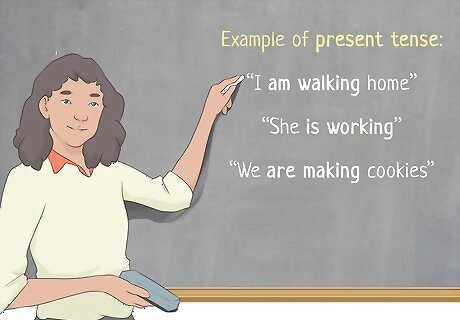
Give an example of present tense. Start off by reminding your students of the present tense, which is the way they convey actions they are doing right now. Give them a few examples of situations in their daily life where they’d use present tense.Tip: You can also mention future tense if you’ve brought it up before, but try not to confuse your students with too much information all at once. Use examples like, “I am walking home,” “She is working,” “We are making cookies.”

Contrast the examples with simple past tense. Use your same examples to give your students an introduction to the past tense. Write down the different versions of your examples on the board to really solidify it in their minds. Change your examples to, “I walked home,” “She worked,” “We made cookies.”
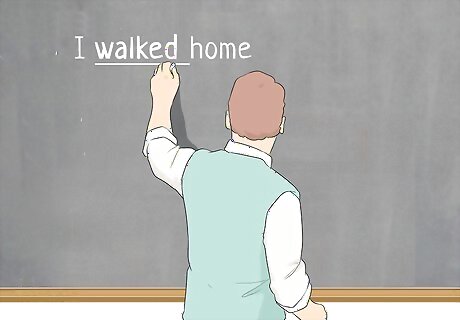
Emphasize the verb change from present to past tense. Underline the verbs in each sentence to call attention to what part of the sentence is changing. You can ask your students to underline them for you if you think they understand it already. ”I walked home,” “She worked,” “We made cookies.”
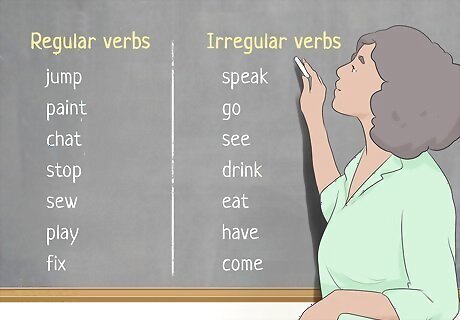
Explain the difference between regular and irregular verbs. When speaking in the past tense, most regular verbs end in -ed. However, irregular verbs end in varying ways, and may have to be studied. If your students are ESL or this is their first time learning past tense, give them a list of common irregular verbs to help them remember. Common irregular past tense verbs include: spoke, went, saw, drank, ate, had, and came.

Introduce continuous past tense. Continuous past tense describes an action that was done in the past, but the speaker is saying it like it is continuously happening. Tell your students that the continuous past tense most often combines the past tense of “to be” with a word ending in -ing. An example of continuous past tense is, “I was walking.” Continuous past tense is also called past progressive tense.
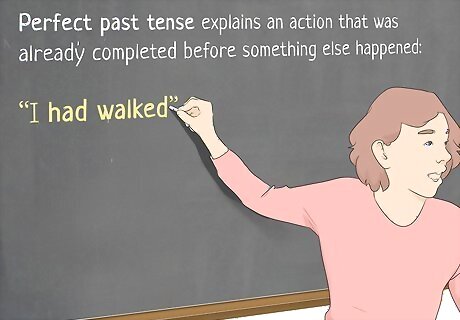
Explain perfect past tense. Perfect past tense explains an action that was already completed before something else happened. Tell your students that it’s often used with the past tense of “to have” plus the past participle of the verb. An example of perfect past tense is “I had walked.” Continuous and perfect past tense are concepts you should save for older students, like high school level or above.
Playing Games to Teach Past Tense
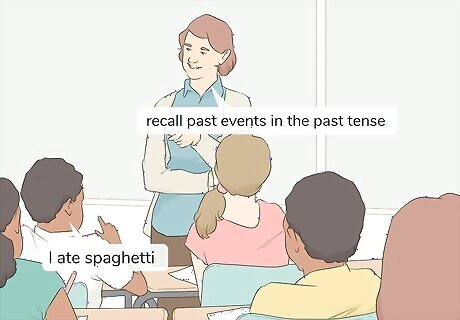
Ask your students to recall past events in the past tense. Go around the room and ask your students what they ate for dinner yesterday or what they did over the weekend. Write their examples on the board and underline the verb to emphasize why the sentence is in the past tense. Your students might say, “I ate spaghetti,” “We went to the park,” “I had a grilled cheese sandwich,” “We visited my grandma.” This will help your students work the past tense into conversation.

Have your students create sentences out of verb cards. Split your students into groups of 4 and pass out a set of expression cards and a set of verb cards. Have each player try to make a sentence using their verb cards to make sentences with the expression cards. If the sentence is believable, they get to discard their verb. If it isn’t, they have to hang onto their card and make a new sentence in their next turn. The aim of the game is to be the first to get rid of your verb cards. Write expression cards like, “an hour ago,” “this morning,” “yesterday,” “last week,” “last year,” and “in 2013.” Print out verbs like, “be,” “have,” “go,” “take,” “start.”
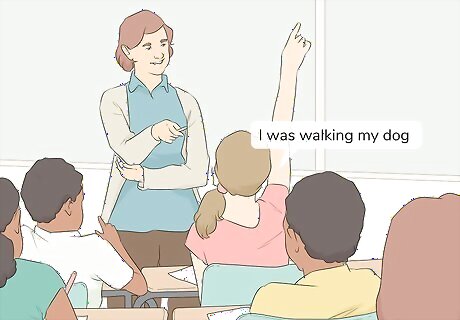
Ask each student to come up with excuses for being late. Tell your students to pretend that they were all late for school, and ask them to finish the prompt “sorry I’m late.” Reiterate that they should use past tense for what happened this morning to make them late. They can say things like, “I was walking my dog,” “I missed the bus,” “I slept in,” “I felt tired.”
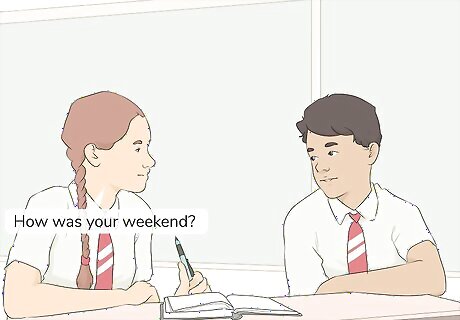
Prompt your students to ask each other what they did over the weekend. Write a list of questions on the board for your students to ask each other. Group them up in pairs of 2 and let them ask the questions for about 5 minutes, then rotate the pairs.Tip: This activity teaches your students how to use the past tense in a conversation. Write example questions like, “How was your weekend?” “What did you do?” “Where did you go?” “Who were you with?” Remind your students to answer using the past tense.
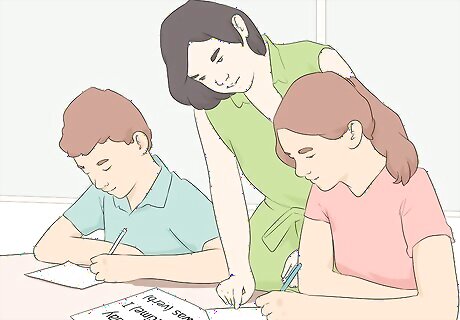
Create sentences out of dates and times. Write down hourly times on 12 pieces of paper. Fold up the paper and have your students draw a card with a time on it. Use the structure “Yesterday at (time) I was (verb).” For example, a student could say, “Yesterday at 6 am, I was sleeping.” “Yesterday at 3 pm, I was working.” “Yesterday at 7 pm, I was eating.”
















Comments
0 comment